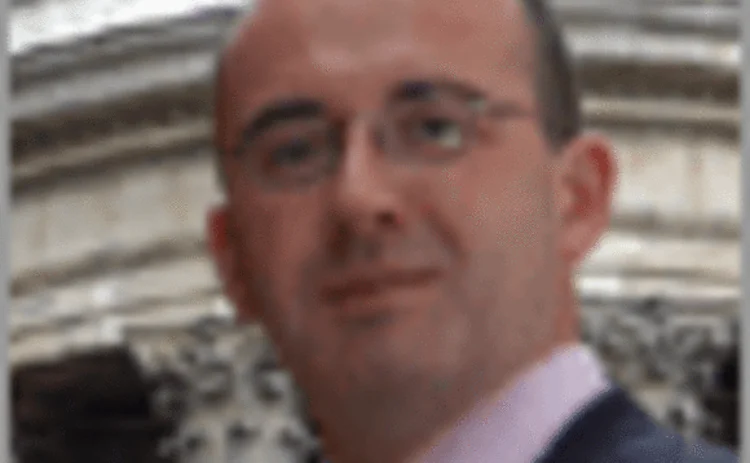
Resolution
As July's £2.2 billion merger of Resolution Life and Britannic showed, the UK closed-fund life sector has become a hive of corporate activity. Resolution's success has been driven by good risk management, as demonstrated by its earlier purchase of Royal & Sun Alliance's life business

For Royal & Sun Alliance (RSA), 2003 was the latest in a series of miserable years. Its share price plummeting, its reserves depleted by a three-year bear market, the insurer had cut dividends, fired its chief executive and was waiting for conditions to improve so it could raise some £1.2 billion of fresh capital. The company's life operations had closed to new business in early 2002, and since then it had cut bonus rates to with-profits policyholders three times and paid a £1 million fine to the UK's Financial Services Authority for mis-selling mortgage endowments.
With over £20 billion of assets, RSA's life business was no longer seen as a core business by its parent, which had been discreetly looking for a buyer. But with a liability portfolio of 1.4 million policies containing complex guarantees, even valuing the business was a challenge.
But in June 2003, the chief actuary of the life business, Mike Kipling, learned about a new way of looking at the problem. At a meeting of the UK Institute of Actuaries, two consultants, John Hibbert and Craig Turnbull, presented a paper entitled 'Measuring and managing the economic risks and costs of with-profits business'.
Although not the first time that actuaries, who traditionally make risk management and asset allocation decisions at UK life companies, had been exposed to the techniques of modern finance theory, the presentation found a receptive audience. Declines in interest rates, equity markets and mortality over the preceding five years had ravaged life company balance sheets, and the old methods had been discredited.
Kipling explains how the old approach worked: "Traditionally you'd have a big pool of assets with a certain proportion invested in equities, property and fixed interest. You might try to match the fixed interest vaguely to the annuity portfolio by duration. But you generally didn't do an awful lot because you had these policyholders who took the ups and downs of it, and you put as much as you reasonably could into equities because you thought that in the long term equities would outperform fixed."
Kipling was struck by Hibbert and Turnbull's logic. "They pointed out that a with-profits life fund was actually divided into several bits. There was the bit where you calculated the actual cost of guarantees embedded in the products. Then there was the asset share of the product, which effectively behaved like a unit-linked policy, and finally the estate, which is what was left over."
How should policyholder funds be invested to match these liabilities? "Traditionally, you invested them all in the same way," Kipling recalls. "Hibbert and Turnbull asked how you might invest that guarantee liability separately." Here they deployed the theory of option pricing, invented by Fischer Black, Myron Scholes and Robert Merton 30 years earlier.
Kipling already knew about options. In 1998 and 1999 he had bought quantoed euro swaptions from Goldman Sachs with a billion plus notional as a hedge for RSA's guaranteed annuity rate (GAR) liabilities. Goldman is believed to have earned a fee of over £20 million on this highly structured transaction, and Kipling wanted to spare his policyholders from additional transaction costs. But by exposing the inner workings of options theory, Hibbert and Turnbull had shown him a way of avoiding using the derivatives markets.
"The natural hedge for a guarantee is the delta hedge an investment bank would hold if it maintained exposure to the derivative rather than try to lay it off, which would be a short equity position and a long fixed position," explains Kipling. "Now, you can go short equities, but you've always got to be selling futures or something."
Although Hibbert and Turnbull had focused on the guarantee hedge on its own, Kipling saw a way of exploiting a fund structure that would completely avoid the need for derivatives transactions. "If you've got two bits of the fund, one of which has £2.5 billion of equities in it, and the other that wants to be short £250 million in equities, what you've actually got is a fund with £2.25 billion of equities.
"It would be silly to go out to the market and pay away good money to have a sold equity futures position in part of the fund when you've got a very strong bought equity position in the other part. It would be much more sensible to run the two together, selling £0.25 billion of equities but paying your policyholders a return as if you still had £2.5 billion."
Kipling explains how the internal accounting worked. "All one does is simply hold fewer equities. It's not a derivatives position, it's an internal arrangement between the asset share and the guarantee reserve. It's as if we'd written the derivative ourselves and were holding the replicating portfolio for that derivative." As a bonus, the internal delta hedging strategy could also be applied to the fund's property portfolio without the need for property derivatives.
Practical assessment
Kipling assembled his team in Liverpool and began analysing how Hibbert and Turnbull's model might work in practice. "Did you have to rebalance it every day? How sensitive was it to market movements? It's not like an accurate delta hedge that a bank has, because our policyholders cancel their policies and take them away, and we simply can't keep up with that on a daily basis. It turned out when we did the various checks that it wasn't very sensitive at all. It depends on how many equities you've got, and by that time our equity backing ratio was at 30% - quite small anyway."
On the fixed-income side, Kipling planned to supplement this delta hedging strategy using bucketed cashflow matching with interest rate and inflation swaps. By late 2003, he was confident enough to approach RSA's board to suggest implementation of the idea. Meanwhile, for the first time, a serious buyer was looking at the fund. Formerly chief executive of GE Insurance, Clive Cowdery had set up Resolution Life at the beginning of 2003 to invest in closed-life funds.
Assisting Cowdery with his actuarial valuations was consulting firm Tillinghast-Towers Perrin, one of whose actuaries, Ian Maidens, was seconded to Resolution in January 2004. In January 2005 Maidens became group chief actuary of the company. Having already tried and failed to take over Equitable Life's closed book while at GE, Cowdery was acutely aware of the potential conflict of interest between older policyholders of with-profits funds, who typically held valuable guarantees, and younger policyholders, who held few guarantees and therefore required substantial equity investment to have a reasonable chance of meeting their investment goals.
Maidens says a pooled fund structure made this a recipe for disaster. "You're exposing the fund to substantial risks, because if you do invest in equities and they fall in value, you can't recover the losses from the older policyholders because they have guaranteed levels of return. So the only people who can pick up that cost are other policyholders, typically those who came into the fund quite recently and who might not have many guarantees as these have generally reduced over the last 10 years."
Such a disaster had befallen Equitable Life, and the fallout had helped to stall the sale of RSA's life business. Because potential buyers knew they would have to both honour guarantees and offer a decent equity return to newer policyholders, they had demanded a swingeing discount to take the life business off RSA's hands.
But Kipling's hedging strategy, approved by the RSA board in early 2004, would change this. By splitting each policyholder's investment into a guarantee reserve and a unit-linked element, Kipling removed the conflict of interest. Policyholders with valuable guarantees would, as part of the delta-hedging strategy, have a substantial short equity position that made their net equity position small. Those without guarantees would have a much greater equity exposure.
When he learned about Kipling's strategy, Maidens was impressed with how it fitted Resolution's philosophy. "Resolution's policy is very much one of de-risking with-profits funds where necessary to protect policyholders, but preferably without reducing the equity proportions to very low levels - as some funds have done - because we don't think that's consistent with treating customers fairly," he says, referring to the FSA's guidance on policyholder expectations.
Resolution was also impressed with RSA's move to outsource the administration of its life policies to technology services provider Unisys in February 2003. Both this and Kipling's hedging strategy reduced the amount of capital Resolution would need to back the fund, and thus increased the price it could afford to pay RSA. But there was one critical obstacle to overcome before a sale could take place: the FSA would need to approve Kipling's strategy as being in policyholders' interests.
Only when this approval was forthcoming did the sale take place in July 2004, at a price of £850 million - a discount of 35% on embedded value. Although this discount has been characterised as large, Maidens believes RSA obtained a good deal as a result of Kipling's groundwork. Resolution has since retained his services as chief actuary of newly named Phoenix Life & Pensions, and when it bought Swiss Life's closed UK business in December 2004 for £204 million, Kipling was given control of the portfolio.
Risk removal
Meanwhile, the parent company continues to eliminate risk. "Resolution's philosophy is to try and remove other risks where we believe it is inappropriate for policyholders to be exposed to them," Maidens says. "We're in the process of putting in fixed-price servicing agreements with all the life funds to cover all our internal costs as well. So, effectively, the life funds will not be bearing any expense risk - that will all be borne by shareholders." Meanwhile, RSA's original euro swaption GAR hedge has been replaced by equivalent sterling swaptions, to remove sterling-euro interest rate spread risk.
"We are very bearish on longevity," Maidens adds. "Over the last 10 years, annuitant mortality has constantly improved, and people have continually had to increase the reserves held. Every time this happens, there's a loss that has to be charged to the with-profits policyholders. We took the view that this risk was far too large for policyholders to bear in two of our large with-profits funds." The results of this philosophy were apparent in May and June 2005 in a pair of deals where Resolution transferred £2.2 billion and £1.5 billion blocks of annuities in payment to Canada Life and Prudential respectively.
But these deals were overshadowed in July by Resolution's £2.2 billion merger with listed UK life company Britannic, itself a specialist owner of closed funds. The increased market capitalisation of the re-listed entity provided a substantial paper gain for Cowdery and his investors. Observers may ask whether Kipling's talents will now be brought to bear on Britannic's with-profit funds. Although Maidens plays down this particular suggestion, it seems unlikely that the merger will diminish Resolution's risk focus, when it has proved so successful in the past.
Only users who have a paid subscription or are part of a corporate subscription are able to print or copy content.
To access these options, along with all other subscription benefits, please contact info@risk.net or view our subscription options here: http://subscriptions.risk.net/subscribe
You are currently unable to print this content. Please contact info@risk.net to find out more.
You are currently unable to copy this content. Please contact info@risk.net to find out more.
Copyright Infopro Digital Limited. All rights reserved.
You may share this content using our article tools. Printing this content is for the sole use of the Authorised User (named subscriber), as outlined in our terms and conditions - https://www.infopro-insight.com/terms-conditions/insight-subscriptions/
If you would like to purchase additional rights please email info@risk.net
Copyright Infopro Digital Limited. All rights reserved.
You may share this content using our article tools. Copying this content is for the sole use of the Authorised User (named subscriber), as outlined in our terms and conditions - https://www.infopro-insight.com/terms-conditions/insight-subscriptions/
If you would like to purchase additional rights please email info@risk.net
More on Markets
Buy side would welcome more guidance on managing margin calls
FSB report calls for regulators to review existing standards for non-bank liquidity management
Citi halves swaptions book with US retail funds
Counterparty Radar: Mutual funds and ETFs cut exposures by 22% in Q4
Who’s winning the €STR futures race? Depends how you measure
CME, Eurex and Ice all claim to be leading, but experts say it’s too early to pick a winner
CDS review seeks to tackle conflicts ‘elephant’
Isda AGM: Linklaters proposes overhaul for determinations committee - including independent members
Saudi Arabia poised to become clean netting jurisdiction
Isda AGM: Netting regulation awaiting final approvals from regulators
Buy side looks to fill talent gap in yen rates trading
Isda AGM: Japan rate rises spark demand for traders; dealers say inexperience could trigger volatility
JP Morgan’s new way to trade FX overlays
Hybrid execution method allows clients to put dealers in competition via a single trading agreement
Pension funds eye 30-year Bunds as swap spread tightens
Long-dated bonds continue to cheapen versus euro swaps, and some think they might fall further







